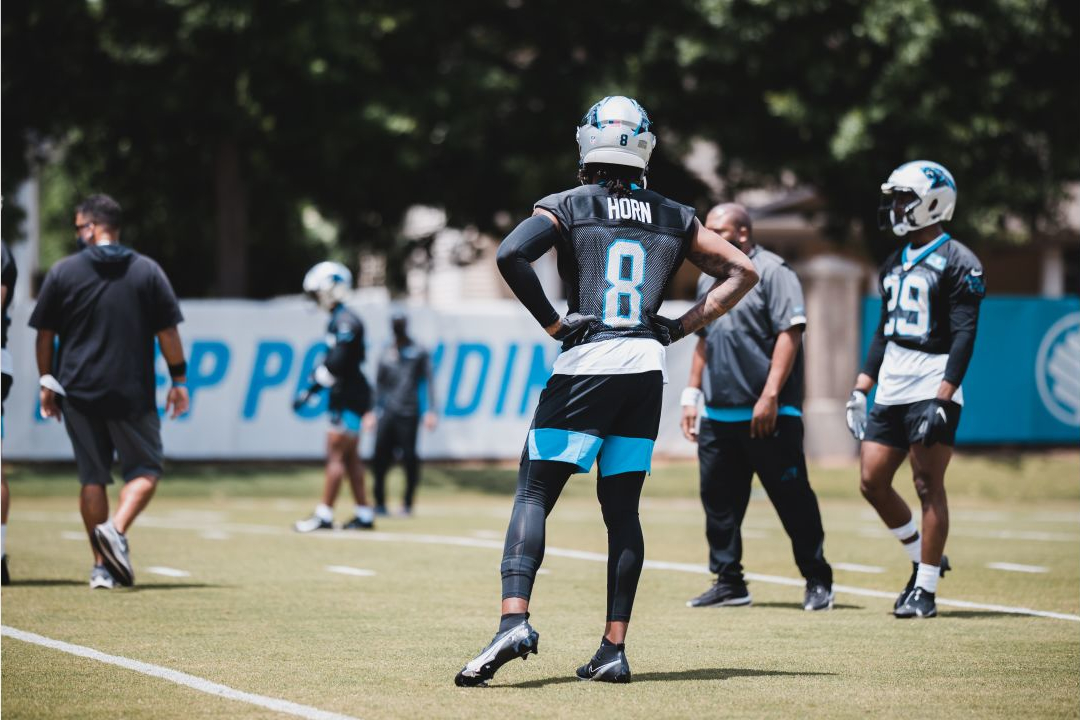When teams look to rebuild, a major part of their strategy often revolves around replacing veteran players with draft picks that they can then convert into a young core who in turn can then form the basis of their new roster. Even in instances where teams don’t proactively trade away players, such as is the case with the Panthers, the focus has very much been on getting younger on both sides of the ball.
However, what often gets lost in this is that building through the draft can mean drafting players of quite different ages, and one thing that is very noteworthy about the approach the Panthers have taken under Matt Rhule is that they are not only looking at add a lot of rookies, but that they seem to have placed a priority on drafting young rookies in particular. In the 2021 NFL Draft Jaycee Horn, Terrace Marshall Jr, Tommy Tremble and Chubba Hubbard are all 21 or younger, with both Marshall and Tremble having turned 21 since the draft. This follows a 2020 draft where only Bravvion Roy was older than 22 to start his rookie season.
While this seems to be more than simply coincidental, the question that really matters is whether this is an approach that actually has any basis in evidence, and whether the Panthers are actually creating a competitive edge for themselves by taking such an approach. So we’ve taken a look at the data to find out.
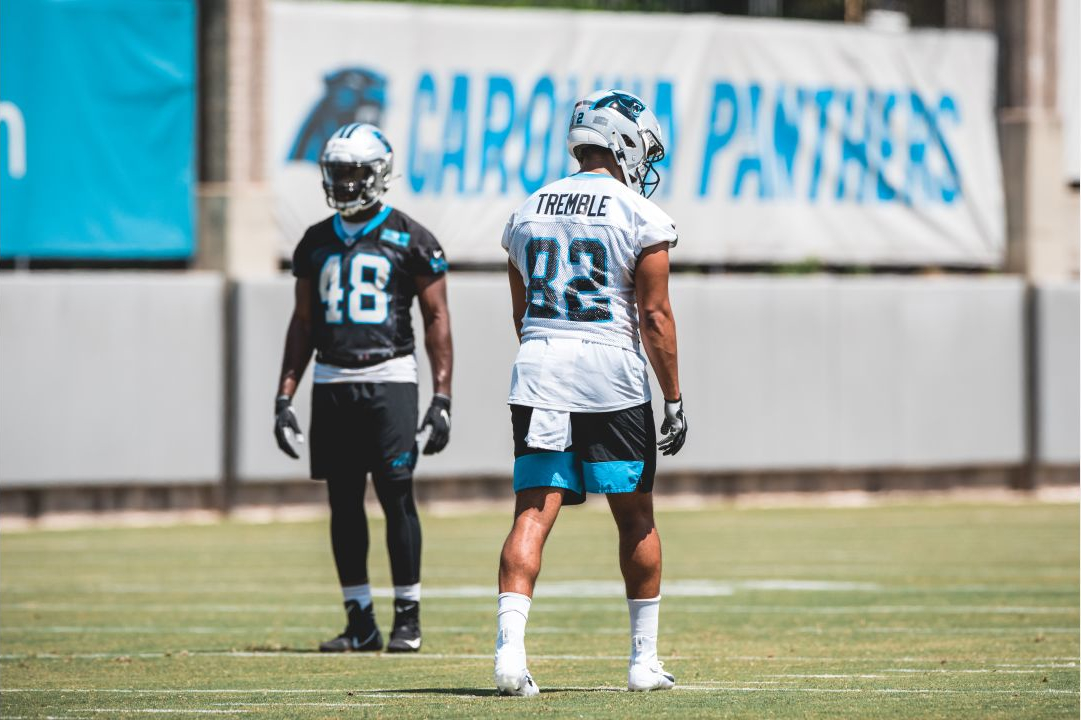
Photo Credit: Carolina Panthers
What we want to do is see if a relationship exists between a draft prospect’s age and how successful they then go on to be in the NFL. To do this we need to establish the metric we will use to judge a player’s quality in the NFL. The measure we will leverage is Pro Football Reference’s AV, which we have used before and which gives a rough measure of how good a player has performed in any given season.
The data set we will use will incorporate the 2000 to 2014 NFL Drafts, which gives us a sample of 3568 players. The way we will use AV is by taking the sum of highest four preforming seasons in a player’s first 7 years in the NFL. This value will be referred to as AdjAV for the rest of this article. The reason for using this particular metric is that some players may be unlucky and miss seasons due to injury and that some players might take a year or two longer to reach their full potential.
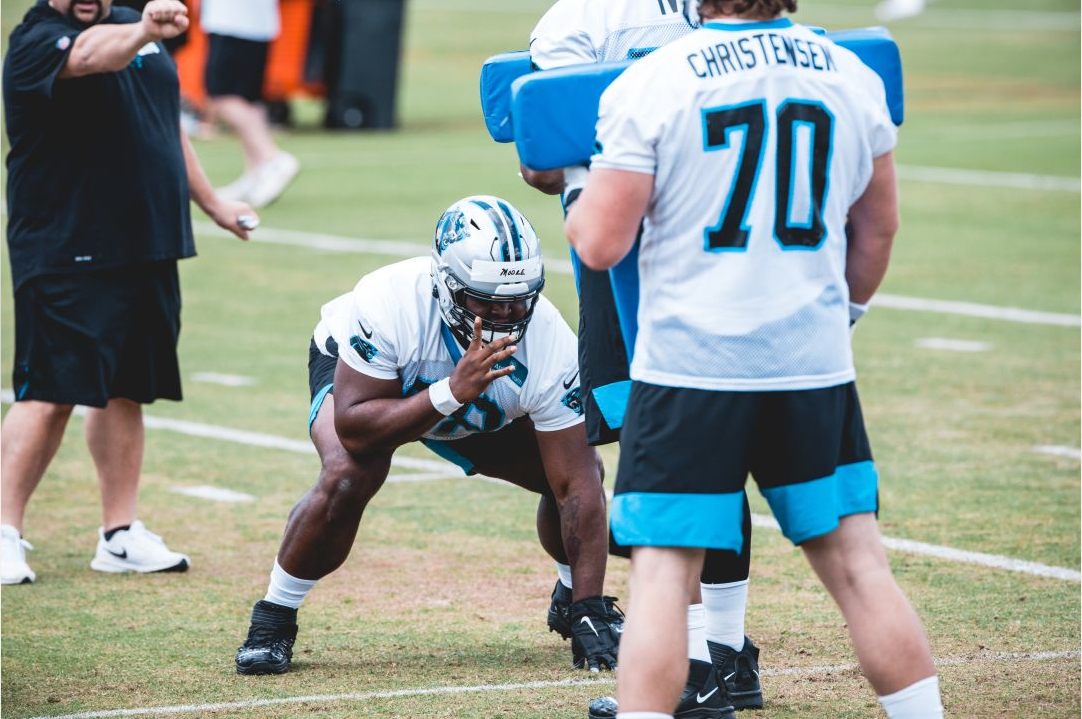
Photo Credit: Brandon Todd/Carolina Panthers
Now that we have our data, the next thing to do is to see if NFL teams under- or over-value age with NFL prospects. To do this, we perform a linear regression of where a player was selected in the draft against their AdjAV. Initially, we do this on a training set containing 70% of the data, and then verify its predictive power by evaluating it against the remaining 30% of the data. We can verify if a relationship exists between a player’s draft position and AdjAV by looking at the R^2 value.
A positive R^2 would indicate that where a player is drafted can predict their AdjAV, and the higher the R^2 (which has a maximum value of 1) the more significant the effect. We find that omitting age, such a model has an R^2 value of 0.29. So, as expected, the higher a player is selected the better they tend to be, but the order in which players are drafted doesn’t allow us to consistently determine which will have the better career.
Next, we create a model which has an additional factor taking age into account. If the NFL undervalues age with their draft decisions, we’d expect younger ages to lead to higher AdjAVs, and for the R^2 to be higher than that of the model without age as a variable, if teams overvalue younger players, then the R^2 value would be less than that for the data set as a whole.
So, what does the data look like?
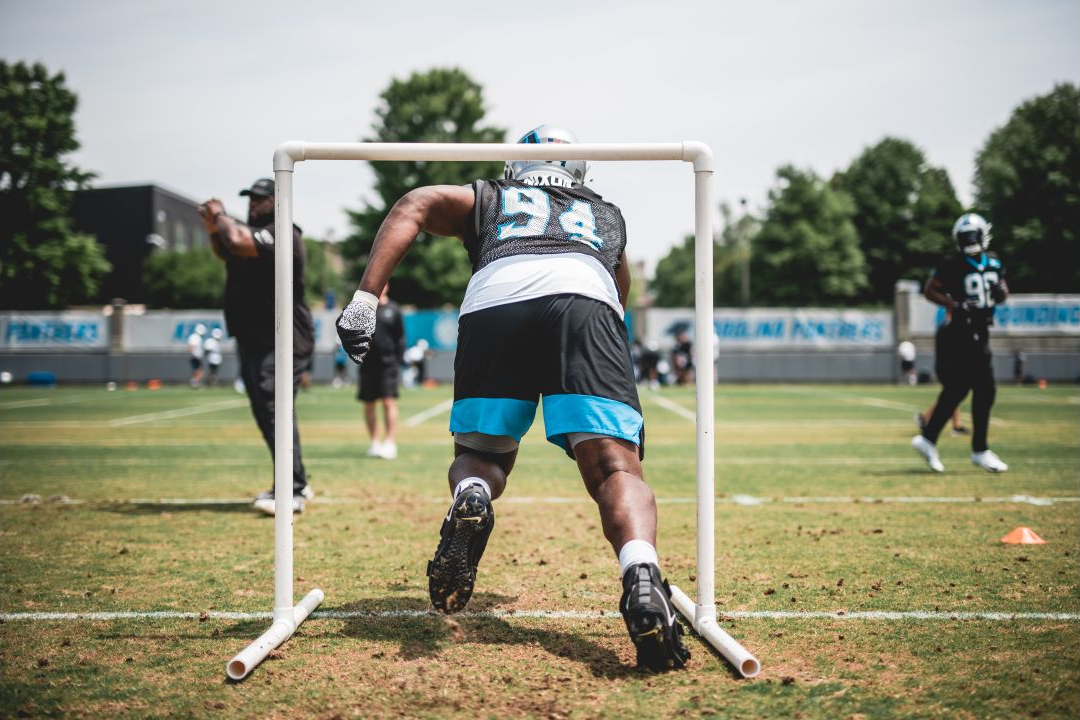
Photo Credit: Brandon Todd/Carolina Panthers
The headline answer is that age has a negative correlation with AdjAV (so younger players are better) and the model has an R^2 of 0.31. So, while the evidence isn’t slam dunk conclusive, it does suggest that the NFL should value age more when determining where to pick players.
To better illustrate this, we can plot this model incorporating age to see the expected AdjAV depending on where a player was picked and their age. As you can see from the following graph, the younger a player is, the better you expect them to be. The difference isn’t huge, but it is still striking. According to the model a 21-year-old selected around pick 100 can expect to have a similar career to a 24-year-old selected around pick 75.
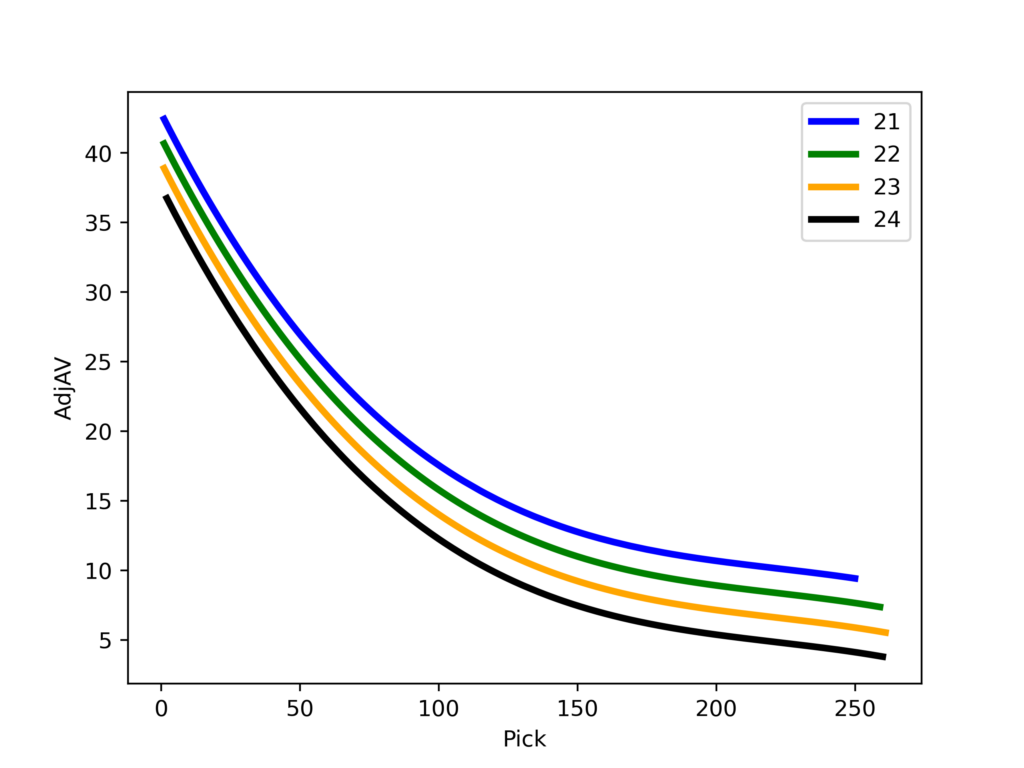
It should be stressed that such a relationship isn’t certain – if the model perfectly explained AdjAV you’d expect an R^2 of 1, rather than 0.31. What is important to take away in this regard is that teams shouldn’t just draft players because they are younger, but rather that teams underestimate the greater potential in younger players. This doesn’t mean that teams should 21-year-olds with third round grades over 22-year-olds with 2nd round grades, but rather that if they are deciding between two players with equal grades, then age should be part of that decision to a greater extent than is currently the case.
In many ways this shouldn’t be hugely surprising, younger players have had less time to develop both technically and physically and so are more likely to continue to develop after they are drafted. At some positions, running back being the most obvious, younger players also have fewer wear and tear on their bodies, and so are potentially both less likely to succumb to injury but also are better able to retain their athleticism over time.
For the Panthers, a continued focus on drafting especially young prospects is unlikely to be some magic bullet that overcomes all other issues but, especially for a team that is looking at competing over the next half a decade as much as the next twelve months, it has a chance to allow them to create the kind of small competitive edge that Matt Rhule has talked so much about. It might seem like quite a simple conclusion, but the Panthers are making smart, process-based decisions, and the importance and rarity of that shouldn’t be underestimated.
(Top photo via Brandon Todd/Carolina Panthers)

